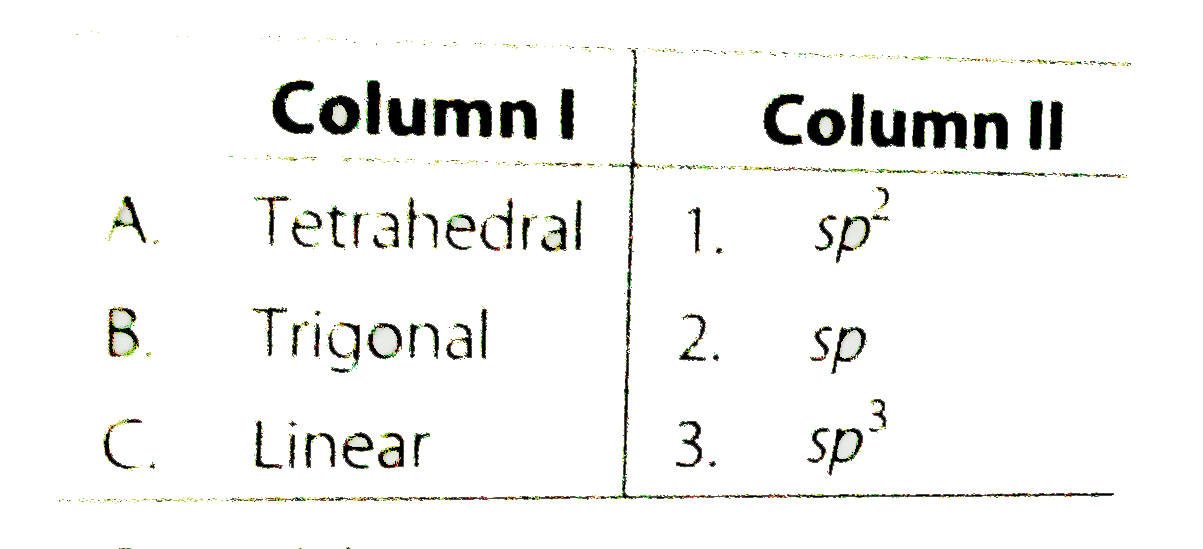Antibody molecule is Y shaped. The two tips of this Y shaped molecule bind to antigen through which type of
interaction /bond ?
Non-covalent interaction
Disulfide bonds
Covalent interaction
Peptide bond
The correct Answer is:A
To solve the question regarding the type of interaction or bond through which the tips of the Y-shaped antibody molecule bind to an antigen, we can follow these steps:
1. Understanding the Structure of Antibodies:
- Antibodies are Y-shaped molecules composed of two heavy chains and two light chains. The tips of the Y are known as the antigen-binding sites.
2. Identifying the Interaction Type:
- The question specifically asks about the type of interaction that occurs between the antibody and the antigen at these binding sites.
3. Evaluating the Options:
- The options provided are:
- Non-covalent interaction
- Disulphide bond
- Covalent interaction
- Peptide bond
4. Analyzing Each Option:
- Non-covalent interaction: This includes various types of weak interactions such as hydrogen bonds, ionic bonds, and van der Waals forces, which are typically involved in antigen-antibody binding.
- Disulphide bond: This is a strong covalent bond that occurs within the antibody structure itself, connecting different chains, but not between the antibody and antigen.
- Covalent interaction: This is a strong bond that involves sharing electrons, which is not the primary interaction in antigen-antibody binding.
- Peptide bond: This is a specific type of covalent bond that links amino acids in proteins, not relevant to the binding of antibodies to antigens.
5. Conclusion:
- The correct answer is non-covalent interaction, as this is the type of interaction that allows antibodies to bind to antigens effectively and reversibly.
Final Answer:
The tips of the Y-shaped antibody molecule bind to the antigen through non-covalent interactions.
- Antibodies are Y-shaped molecules composed of two heavy chains and two light chains. The tips of the Y are known as the antigen-binding sites.
- The question specifically asks about the type of interaction that occurs between the antibody and the antigen at these binding sites.
- The options provided are:
- Non-covalent interaction
- Disulphide bond
- Covalent interaction
- Peptide bond
- Non-covalent interaction: This includes various types of weak interactions such as hydrogen bonds, ionic bonds, and van der Waals forces, which are typically involved in antigen-antibody binding.
- Disulphide bond: This is a strong covalent bond that occurs within the antibody structure itself, connecting different chains, but not between the antibody and antigen.
- Covalent interaction: This is a strong bond that involves sharing electrons, which is not the primary interaction in antigen-antibody binding.
- Peptide bond: This is a specific type of covalent bond that links amino acids in proteins, not relevant to the binding of antibodies to antigens.
- The correct answer is non-covalent interaction, as this is the type of interaction that allows antibodies to bind to antigens effectively and reversibly.
The tips of the Y-shaped antibody molecule bind to the antigen through non-covalent interactions.
Similar Questions
What is the shape of a CO2 molecule ?
View SolutionWhat is the shape of a water molecule ?
View SolutionWhich antibody molecule is made of two monomers ?
View SolutionWhat is the shape of SO3 molecule in gaseous state?
View SolutionWhat is the shape of a methane molecule ?
View SolutionMatch the shape of molecules in Column I with the type of hybridisation in Column II.

View SolutionThe shape of XeF6 molecule is :-
View SolutionThe shape of ethylene molecule is
View SolutionShape of PCl5 molecule is __
View SolutionMolecules with see-saw shape are
View Solution
